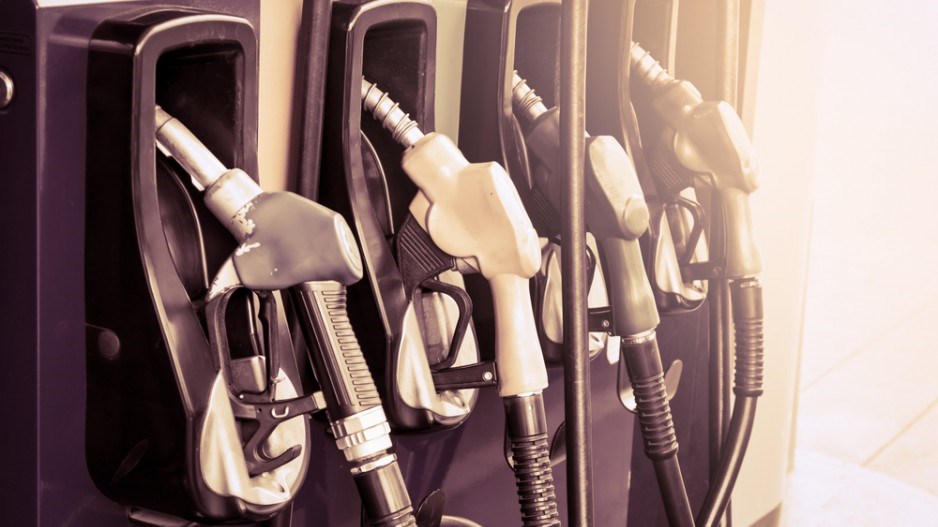A few weeks ago, I had a brief conversation with a motorist from Alberta who was filling up his car at a gas station in Vancouver. After a couple of awkward glances, he blurted: “$1.49 a litre. Can you believe it?” I answered: “I can. It was $1.72 at one point. We are lucky.” The look of complete befuddlement on his face was priceless.
At the start of this century, rising gas prices used to trouble British Columbians in the summer months, but they are no longer limited to the warmest time of the year. The province’s drivers are keenly aware of the fact that our gas is the most expensive in Canada.
In stark contrast with other provinces, the animosity towards fuel prices in British Columbia is not directly related to the carbon tax that has been in place for years. Earlier this year, Research Co. found that only 21% of British Columbians think the provincial carbon tax has hurt their household finances.
Gas prices in Metro Vancouver hit a record high of $1.72 per litre in April. Still, this is nowhere near what some Europeans are dishing out for a litre of fuel. In England, at the start of this month, you would have needed the equivalent of $2.23 to afford a litre of gas for a vehicle. Italy’s prices were even higher, at $2.79 per litre.
But looking at Europe is of little comfort to British Columbians who know that gas is significantly cheaper to the east and south. In any case, Research Co. wanted to find out if drivers have taken any steps to deal with this disparity.
The most popular strategy to reduce costs is to monitor prices. Across British Columbia, 51% of drivers say they have purchased gas for their vehicle in their community even if the tank was not near empty because prices were suddenly lower.
On a regional basis, Vancouver Island leads the way with the largest proportion of drivers who are keeping a close eye on advertised prices as they are in their vehicle (56%), followed by those in the Fraser Valley (53%), northern B.C. (51%), Metro Vancouver (50%) and southern B.C. (48%).
A second strategy for frugality is to simply purchase less gas for the vehicle because prices are suddenly higher the moment you really need fuel. Two in five drivers (39%) say they have chosen not to fill up the entire tank if the prices are too high.
This tactic is particularly popular for motorists in the Fraser Valley (47%), along with those who reside in northern B.C. (42%) and on Vancouver Island (also 42%). The proportion is lower in Metro Vancouver (37%) and southern B.C. (14%).
A final option, one that has been employed by 18% of British Columbians, is to drive to the United States with the sole purpose of purchasing gas for a vehicle. In the Fraser Valley, 40% of motorists say they have done this in the past year, along with 21% of Metro Vancouverites.
Only 15% of drivers in British Columbia say they have not taken any of these three steps to deal with gas prices. At a time when major purchases are being postponed until the right offer or promotion comes along, fuel is in a unique situation.
Earlier this year, the provincial government asked the BC Utilities Commission (BCUC) to review the cause of the spikes in gas prices. As outlined by my colleague Nelson Bennett, the final report from the BCUC suggested that, at least as it pertains to Vancouver, gas prices appear to be “choreographed” and pointed to an unexplained difference of $0.13 between prices for a litre of fuel on either side of the 49th parallel. The BCUC memorably characterized the conduct of the fuel companies that operate in British Columbia, calling them an oligopoly that behaves as a monopoly.
The provincial government has enacted legislation to compel oil and gas companies to disclose supply and pricing data. The proposed course of action is supported by an overwhelming majority of British Columbians (85%). This includes 88% of those who voted for the BC New Democratic Party or the BC Liberal Party in the 2017 election, as well as 87% of those who cast a ballot for the BC Green Party.
The survey shows that drivers are acting to deal with the difficulties presented by spikes in gas prices. The legislation that the provincial government has authorized would only prove successful if drivers start to notice lower prices at the pump. Ideally, $0.13 lower than now. •
Mario Canseco is president of Research Co.
Results are based on an online study conducted November 27–29, 2019, among 800 adults in British Columbia. The data has been statistically weighted according to Canadian census figures for age, gender and region in British Columbia. The margin of error, which measures sample variability, is plus or minus 3.5 percentage points, 19 times out of 20.




